Son of Frankenstein, The Invisible Man Returns (1939, 1940)
Directed by: Joe May, Rowland V. Lee
Written by: Kurt Siodmak, Willis Cooper
Starring: Basil Rathbone, Bela Lugosi, Boris Karloff, Cedric Hardwicke, Nan Grey, Vincent Price
It’s been years since the events of the last movie, but the village of Golfstadt is still haunted by the memories of the dreadful creation of Henry Frankenstein. Understandably, the townsfolk are none too happy when Henry’s son Baron Wolf von Frankenstein arrives to take up residence in the family castle, with his wife Elsa and young son Peter in toe. Wolf doesn’t believe the stories of the Monster killing and maiming, but changes his mind when the local policeman Inspector Krogh – sports an artificial arm – pays Wolf a visit and tells him that his real arm was torn out by the Monster when he was a child. While investigating his father’s ruined tower, Wolf discovers the comatose Monster in the care of Ygor, a demented blacksmith who has survived a hanging for graverobbing. Wolf decides to repair and resurrect the Monster to restore his family’s name, but Ygor has different plans for him….
Highly praised by some, Son Of Frankenstein is not a bad movie taken on its own, but unfortunately it follows the superb Frankenstein and the even more superb Bride Of Frankenstein, so it would have had to have been something really special to stand amongst those two movies, and special is something Son Of Frankenstein isn’t. Somewhat lacking in both horror and imagination, it sees the Monster sidelined for most of its running time, something that probably put Boris Karloff off from returning after this movie as the Monster. It’s also a very talky movie, with very little actually happening for at least the first half, but luckily the dialogue is often very good and, coupled with some stunning sets, ensues that it is certainly enjoyable as long as you don’t expect too much. There are some who prefer it to Bride; I personally consider it one of the least of the Frankenstein series. I get the impression that they were holding back in almost every way, perhaps wary of the controversy and censor irritation that had temporarily put on hold Universal’s horror series in 1936.
It had actually been a very bad time for Universal overall, with the Laemmle family losing control of the studio when they were unable to repay a loan they had borrowed because of cost overruns and diminishing box office on many films. The two new owners were uninterested in horror films until 1938, when a virtually bankrupt studio in Los Angeles screened a double bill of Dracula and Frankenstein out of desperation, and made so much money that the two movies were re-issued in many other theatres, albeit slightly censored. This convinced Universal to make a well budgeted third Frankenstein film, and originally planned it in colour but changed their mind due to Karloff’s makeup not showing up well. Claude Rains and Peter Lorre were considered for the role of Wolf until Basil Rathbone, then best known for playing villains, got the part. The script was so rushed that much of it was completed minutes before many scenes were about to be shot, but this did have one major benefit. Willis Cooper’s original screenplay did not contain the character of Ygor [God it must have been dull!] and a second draft had the character, to be played by Bela Lugosi, only having a small role. Director Rowland V. Lee, unhappy with the way Lugosi had been sidelined by Universal and the lowly amount he was being paid for Son Of Frankenstein, made Ygor have more and more prominence in the story as more and more pages of the shooting script were completed. The film was a commercial success and suddenly the Universal horror movie was back!
There’s an amusing bit right at the start, where, on the train to Goldstadt, Elsa looks out of the window at the barren countryside and remarks to the others “what a strange looking country “, this actually drawing attention to the fact that the same few model trees are going by again and again! Still, Wolf’s comment on how “nine out of ten people call that misshapen creature Frankenstein “ is nicely aimed at the many viewers who does just that, and ends rather eerily with the word “Frankenstein” being finished off by a gloomy voice and a quick image of the Monster outside their compartment. Son Of Frankenstein takes a laboriously long time in setting up and telling its simple story, and relies too much on dialogue than actual horror throughout, but many scenes do often sparkle with a dry wit and sometimes even some fun rhyming word play. “We came to meet you, not to greet you” says a member of Wolf’s welcoming party, and the housekeeper utters an old superstition: “if the house is filled with dread, place the beds end to end”. Wolf’s barbed exchanges with Inspector Krogh are very nicely written and staged by the two actors playing them, with great use of body language. There is little attempt at consistency with previous films though. The town is now called Goldstadt, for the second time the Frankenstein home is different, but even more oddly, his tower is now right behind the castle and now even has burning sulphur under it. I don’t even want to ask why Henry is buried in a tomb, despite being blown to bits in the proceeding film!
The scenes where we first see Ygor, peering in and out of windows and – in one creepy bit – looking at Peter sleeping in his bed through a secret cubby hole in his bedroom wall, are very effective in building up to the first ‘proper’ appearance of the character, though Ygor’s comment about the Monster “he does things for me” will probably cause most modern viewers to laugh! There’s much verbal conflict between Wolf and Ygor over the Monster, who doesn’t get up and about until over half way, where even then he’s mostly restricted to the mill and the castle except for two well staged scenes where he kills people at Ygor’s bidding which benefit from having no music. We learn that the Monster has befriended Peter, even giving him a watch [which was possibly influenced by a bit in the original novel], but why don’t we see it? Only two major scenes show the Monster as being the virtually human creature of Bride: when he examines Wolf’s face and, looking in the mirror, is highly disturbed by his ugly appearance, and when he cradles Ygor’s body and lets out a terrible cry of anguish. Two scenes of the Monster with Benson the butler, the second showing him killing him, were cut for some reason. The most interesting bit involving the Monster is earlier when Wolf examines him and uses many medical terms while doing so, giving the Monster a certain believability which is then ruined when Wolf says “he’s completely superhuman”! The climax, where you just know Krogh is going to lose a second arm, does finally deliver a few thrills, with an extra edge due to Peter being in danger, and climaxes in a fun way with Wolf dispatching the Monster with a Tarzan-like swing.
Cooper’s unimaginative script certainly show signs of the way it was written, with many inconsistances, such as – if the Monster was comatose for a long time, then who killed the other victims who Ygor wanted revenge on? This is mostly a very serious film, but there are chuckles to be gained from Inspector Krogh, who holds a cigarette lighter on his mechanical finger and sticks darts in his mechanical elbow, and there’s a very funny bit where Ygor coughs and splutters all over folk in the courtroom he has been brought to. Probably the most memorable thing about Son Of Frankenstein is Jack Otterson’s sets, which are some of the best since The Black Cat. The interior of Castle Frankenstein is truly nightmarish, with everything built at strange angles, beams casting patterns on the walls and, most oppressively, a dining room where the table is overlooked by curved pillars ending in gargoyles. The caves look positively surreal. Everywhere you go, things look distorted, often just by odd use of perspective. Son Of Frankenstein was sadly the last of Universal’s horror movies to look like this in a major way. Director Rowland V. Lee, usually happier with historical dramas, shows us the Monster waking up from his blurry point of view and a couple of other interesting flourishes, while George Robinson’s cinematography is extremely fluid and contains some very fine tracking shots while of course making the most of those amazing sets with great use of shadows. The constant rain helps the dark atmosphere, and the jagged rocks and trees outside look stunning, but why does hardly any action take place amongst them?
Karloff is great as before, and makes more use of those expressive eyes of his which are not quite buried under all that makeup, but just has little opportunity to shine. Ygor is really the chief ‘Monster’ in the film, and Lugosi gives a wonderful performance, possibly his best ever. He makes the character very multi-dimensional; evil, roguish, pitiful, and sometimes rather funny. Another person clearly having great fun is Lionel Atwill as Krogh, who actually seems to be about to burst into laughter at times. Despite later appearing in some, Basil Rathbone disliked horror films, feeling they were beneath him, so he decided to ham it up. His lively, almost tongue-in-cheek performance is enjoyable, but the actor’s disdain is evident. Never mind; he was just about to become a star as Sherlock Holmes. Frank Skinner composed the score for this instalment and his full-blooded work does its best to ramp up excitement when there is little. His main title piece is very good, beginning with his Ygor and Monster themes playing together in patterns of notes going upwards and upwards, then turning into a lament for the film’s central tragedy. The score rarely departs from this material, meaning that it lacks the diversity of Bride’s score, but it works well enough. Son Of Frankenstein is well made overall, and if it had been the first of the series, or maybe one of the last, it would probably come across as being rather good. Sadly, it was proceeded by two of the greatest horror films ever made, and therefore can mostly be regarded, in my opinion, as a major disappointment, only really notable for being simply fantastic to look at.
Geoffrey Radcliffe is sentenced to death for the murder of his brother Michael, a crime he did not commit. Just before he is about to be hung, his friend Dr. Frank Griffin pays him a visit and subsequently disappears from his cell. Inspector Sampson of Scotland Yard realises that Griffin is the brother of the original Invisible Man and may have given Geoffrey the formula to aid his escape. Geoffrey, despite the wishes of his fiancée Helen Manson, decides to track down the original murderer, but has to do it before the invisibility drug drives him insane. He learns that a recently-hired employee to the Radcliffe family mining operation has been promoted, arousing his suspicions….
The Invisible Man series never seems to be as popular as the others, perhaps because creatures like Dracula and Frankenstein’s Monster are more like actual monsters, whilst the Invisible Man is just a man who is invisible, albeit often one who is going mad. Also, not all the films in Universal’s series are really horror movies; The Invisible Woman is a comedy and The Invisible Agent a war spy thriller, though they are certainly all worthy of your time and show how a series can go down different and interesting pathways. The Invisible Man Returns is a solid sequel to the 1933 original that is no classic and is nowhere as groundbreaking but certainly entertains, though it’s far less of a horror movie. There are some who prefer it though, and it’s a very hard movie to dislike.
In 1939, Universal signed a five-picture deal with H.G.Wells, giving them the rights to either remake his novel or use the characters, story etc. for sequels. The commercial success of Son Of Frankenstein had re-energised the studio regarding horror, and they started to plan more sequels to/ reworkings of some of their 1930’s films, though The Invisible Man was the only character they had to buy the rights to [and this allowed them to display Wells’ name on the poster]. he attitude to the films of the 1940’s was quite different; they were to be produced very quickly and cheaply, with little room for artistry or annoying the censors. These movies were just made to entertain, so there was less of the Gothic doom and gloom. The Invisible Man Returns was co-written by Kurt Siodmak, one of many émigrés from Germany, and one who would write many horror and science fiction movies afterwards. The script by him and Lester Cole was based on a story by Siodmak and director Joe May who was also a German émigré and whose difficulty with English made the set a tense environment. It tenuously links to the 1933 film and uses many of it elements, including a star whose proper face is only seen at the end, and situations, while adding a murder mystery to the mix. John P.Fulton returned to do the invisibility effects and won as Oscar nomination for his trouble. The film went over budget but did good box office and Universal’s second horror cycle was well under way.
Like The Invisible Man, The Invisible Man Returns opens seemingly already into the story, with the exposition rather awkwardly given to some people chatting in an inn. Again, we don’t see the invisible protagonist injected with the drug and becoming invisible; it has already happened by the time we switch to the prison, where, after Geoffrey has escaped, the warden helpfully says to everyone; “you’re under arrest, all of you”! He is revealed to us slowly, first of all by a suitcase being opened and clothes being taken out, then in a similar manner to before, first of all with his face and hands covered in bandages, then with his sunglasses off so he seems to have no eyes, then finally removing all his bandages and clothes. This all takes longer than before, because almost as much time is spent on the murder mystery element, which, to be frank, doesn’t work too well because the killer is apparent immediately! Still, Geoffrey’s impending madness is convincingly handled in gradual stages, building to a great scene where, at a dinner with Nan and Frank, his megalomania totally takes over and he talks of the weakness of humans compared to animals, and ruling the world. “The nations will tremble before me” he cries towards the end of a lengthy soliloquy. This Invisible Man doesn’t seem to have as much fun at people’s expense as the first, but he does wonderfully harass one guy for about fifteen minutes, doing things like taking out car engine wires as the man keeps putting them back in, constantly saying “I’m here” as he moves around, and claiming he’s a ghost who can’t “find peace in the other world”, in a terrific combination of humour and increasing cruelty.
There is almost as much humour overall as in Whale’s film, though apart from the afore-mentioned scene and the odd moment, it’s more restricted to funny lines usually concerning the Invisible Man. “I’ll have to see him before I believe he’s invisible” says one policeman, and, my favourite; “Take off his clothes, he won’t do that son, there’s a lady with him”. Overall, the tone is lighter, with this Invisible Man less cruel, consequently meaning there’s less tension, but then Geoffrey is much more sympathetic. Geoffrey’s escape from lots of bobbies compares unfavourably to similar scenes in the original, but after this we have two effective climaxes; the first, a fight in a room where the villain has switched the light off and therefore can’t be seen either, and a struggle on a mine car, which is slightly – but only slightly – diminished by having the villain obviously matted onto the mine car, for some strange reason. Then follows a very touching scene where Geoffrey removes the clothes from a scarecrow and talks to it, obviously almost totally mad. This would have been a perfect ending to the film, leaving much ambiguity about his fate, but of course, this now being the 40’s, we have to have a happy ending, so we get one, nicely paralleling the last scene of the original.
The special effects mostly replay gags used before, though sometimes slightly more elaborate, such as in the undressing scene and the final return to visibility, where you see veins forming before the body. his means that some of the matte work is not quite as good because it has to support more. Still, the effects are still amazing for their time, and one can’t help but admire the amount of painstaking work that must have gone into them. These days, all you have to do is sit at a computer screen….but enough moaning about that! Oddly, while the first film stayed clear of Gothic trappings, this one has tons of the obligatory fog and overall looks more conventionally like a horror film, though generally it’s not especially interesting visually apart from the effects. While Siodmak and May’s script is flawed, including renaming the monocaine drug ’duocaine’ before calling it monocaine again, it does allow all of its main characters to shine, not just its title one. Frank, whose use of guinea pigs in his research would not make him a ‘nice guy’ if the film was made now, has an interesting scene where he brings a guinea pig back to visibility only for it to die, and even better is an especially well written, staged and acted scene where the Inspector is questioning Frank, both respective actors Cecil Cellaway and John Sutton showing subtly that they are holding a great deal back. Notice how one character, Richard Cobb, is always smoking so he will hopefully notice if Geoffrey is near. There is quite a bit of attention to seemingly minor details here.
Joe May’s direction is solid and no more, but I would say that Vincent Price, in the first of countless horror movies [though he wouldn’t really become a ‘horror star’ until the 50’s] is better than Claude Rains in the title role. His melodious voice, always a joy to listen to, is allowed to run the full gamut here in showing the extremes of Geoffrey’s character, from delivering megalomania rants and chillingly evil threats to touching moments of quiet and pathos, most notably in an early scene where Geoffrey begs Helen to help Frank kill him if the madness takes hold. We don’t see his face, but Price’s beautiful voice acting gives us all that we need, and that’s one mark of a brilliant actor. Fans might be surprised to see him without a moustache at the end. Nan Grey, previously the most famous victim of Dracula’s Daughter, is also very strong, really making you believe that she is a woman who would do almost anything for the man she loves, and showing very movingly her despair. Frank Skinner and Hans J.Salter wrote the score, as they would for many successive outings, and it’s a conventional but enjoyable effort, with, as with Son Of Frankenstein, the main title music nicely setting out the horror element before moving to the tragic, and the actual score based primarily on those elements except for the scenes of excitement. An early scene between George and Helen is backed by lovely romantic music which was an increasing factor of most films of the time. I really like The Invisible Man Returns; it may be just a cash-in, and doesn’t hold a candle to the original, but it’s made with some care and is certainly an enjoyable watch.

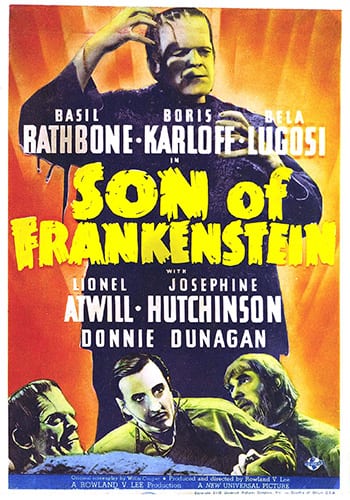
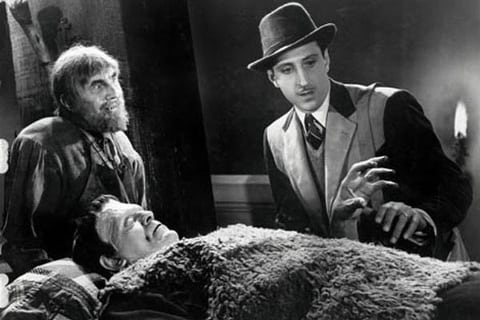
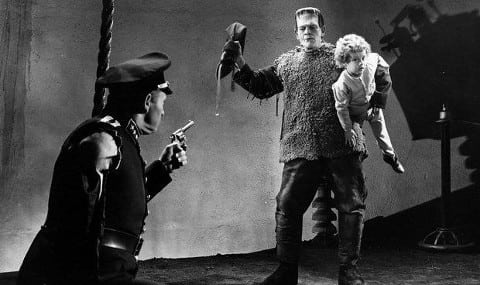


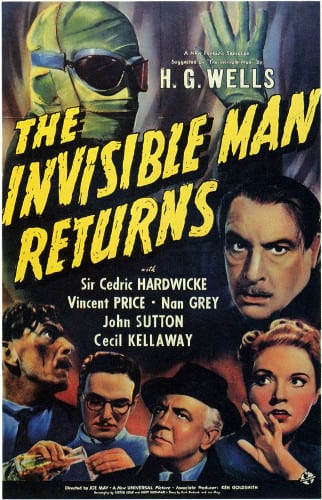
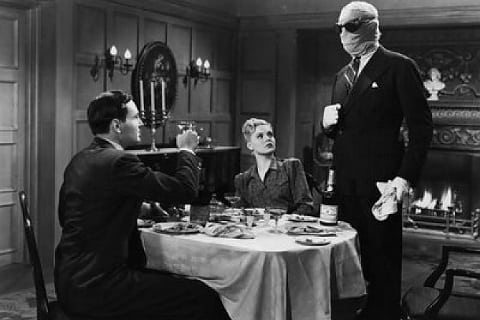
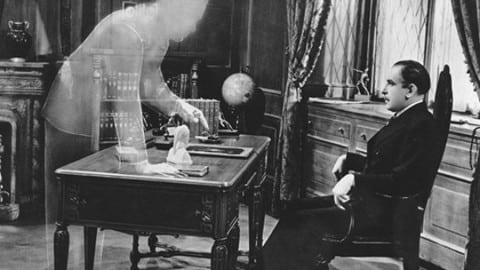

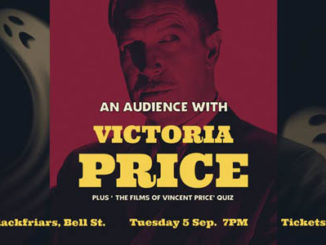
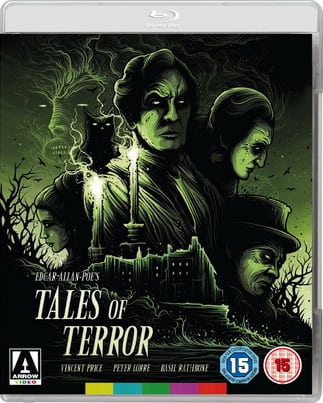
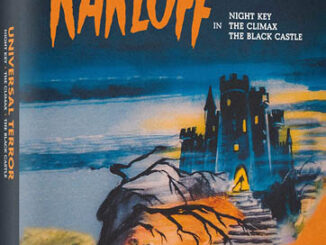
Be the first to comment